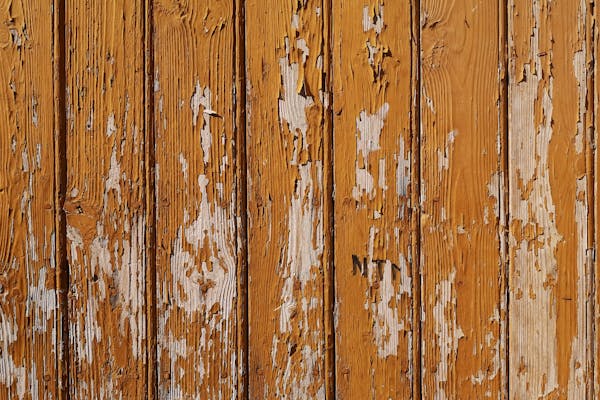What Does it Mean if My Hardwood Floors Are Warping?
What Does it Mean if My Hardwood Floors Are Warping?
.png)
If you have noticed that your floorboards have begun bending, folding, or they feel uneven underfoot, then they may be warping. Caused by excess moisture or improper humidity levels, warped floorboards can be a serious problem that can threaten the health and longevity of your hardwood flooring.
Sometimes warping takes place on just a few floorboards or in one specific area of the house, other times it affects the entire floor. If you notice any signs of warping, it is important that you contact a flooring professional immediately to assess the damage and determine the best path forward.
In this post, we will discuss hardwood floors and what it means when they begin to warp. We will explain what you need to do if your hardwood floors begin to warp, talk about how water causes damage to hardwood floors, and explain some other aspects that can cause hardwood floors to warp. Keep reading to learn more!
What Do I Do if My Floorboards Are Warping?
The best thing you can do to preserve your floorboards is to identify and address the source of damage. This may involve identifying any potential moisture sources, such as leaks or spills in your pipes, and repairing the issue.
If the warping persists or is severe, it is advisable to seek professional assistance. Floorboard repair or replacement may be necessary to prevent further damage and maintain the structural integrity of your floor.
Let's quickly discuss how water causes damage to floorboards and some tips to prevent further harm.

How Water Causes Damage to Floorboards
One of the first signs of water damage is peeling veneer. As moisture seeps into the floor and reaches the veneer layer, it weakens the adhesive holding it in place, causing it to peel and crack. This can be a precursor to warping and is a clear indication that there is a water damage issue that needs to be addressed.
If left unchecked, moisture damage can cause wooden floor planks to warp. Warping occurs when the wood absorbs water, causing it to expand and become misshapen. This is often irreversible and if warping has begun, full plank replacements are needed. If you notice warping in your floorboards, it is usually too late to save those specific planks. However, if it has not spread, it is still possible to salvage the rest of the floor.
In addition to warping, moisture damage can cause the boards to cup, which means they take on a concave shape, with the edges higher than the center. This can create an uneven surface and pose a tripping hazard. Additionally, prolonged exposure to water can cause the wood to rot and decay, compromising the structural integrity of the floor.
Prevent water damage by controlling moisture levels in the environment. This can be done by keeping humidity levels within the recommended range, using dehumidifiers in areas prone to excess moisture, and promptly cleaning up any spills or leaks. Regularly inspecting the floor for signs of damage and addressing any issues immediately can also help prevent further damage. Always contact a flooring professional if you notice any signs of water damage to assess the situation and prevent further harm to your floors.
What Issues Cause Hardwood to Warp?
Besides water, there are a few other issues that can lead to hardwood floor warping.
Improper Installation
Improper installation techniques are a common issue that can cause hardwood to warp. When wood is not properly acclimated to the room's temperature and humidity before installation, it can result in warping. It is important to allow hardwood to acclimate for at least a few days to ensure its stability. This is one of many reasons why you should always hire professional and trustworthy flooring professionals to install your floors.
Improper Ventilation
Inadequate ventilation is another factor that can contribute to a moisture imbalance that causes warping. Poor ventilation can trap moisture beneath the floorboards or within the subfloor. This trapped moisture can lead to swelling and warping of the hardwood. Proper airflow is essential to maintain a stable environment for hardwood floors.
Weak Subfloors
Subfloor issues also play a role in hardwood warping. Moisture, unevenness, or structural weaknesses in the subfloor can cause the hardwood to warp. It is crucial to ensure that the subfloor is dry, clean, and level before installing hardwood.
UV Exposure
Direct sunlight can also be a contributing factor. Prolonged exposure to direct sunlight and ultraviolet rays can cause certain areas of the floor to dry out more than others, leading to uneven moisture distribution. This imbalance in moisture levels can ultimately result in warping.
Hardwood Flooring Installed from A Step Above Flooring
If you have noticed warping or cupping in your hardwood floors and have wondered how to fix, repair, or replace the damaged areas, you are not alone. Unfortunately, hardwood floor warping is all too common, caused by a variety of reasons, mainly moisture imbalance and sun exposure.
If properly cared for, hardwood floors can last a lifetime. However, that all starts with proper installation (including acclimating the wood) and continues with vigilant care by the floor's owner.
If you are looking for new hardwood floors, A Step Above Flooring is the team for you. We are a team of flooring professionals who will guide you through our expansive showroom to help you find the perfect hardwood floors for your home and style. Then, we will expertly install your floors to help ensure they are healthy for years to come.
Click here to reach out to our team today! Or stop by our showroom to browse your flooring options!
Want more flooring tips? Follow A Step Above Flooring on Facebook, LinkedIn, and Pinterest for the best free flooring content!
Did we go a step above the rest? Let us know by leaving a quick five-star Google review here!
